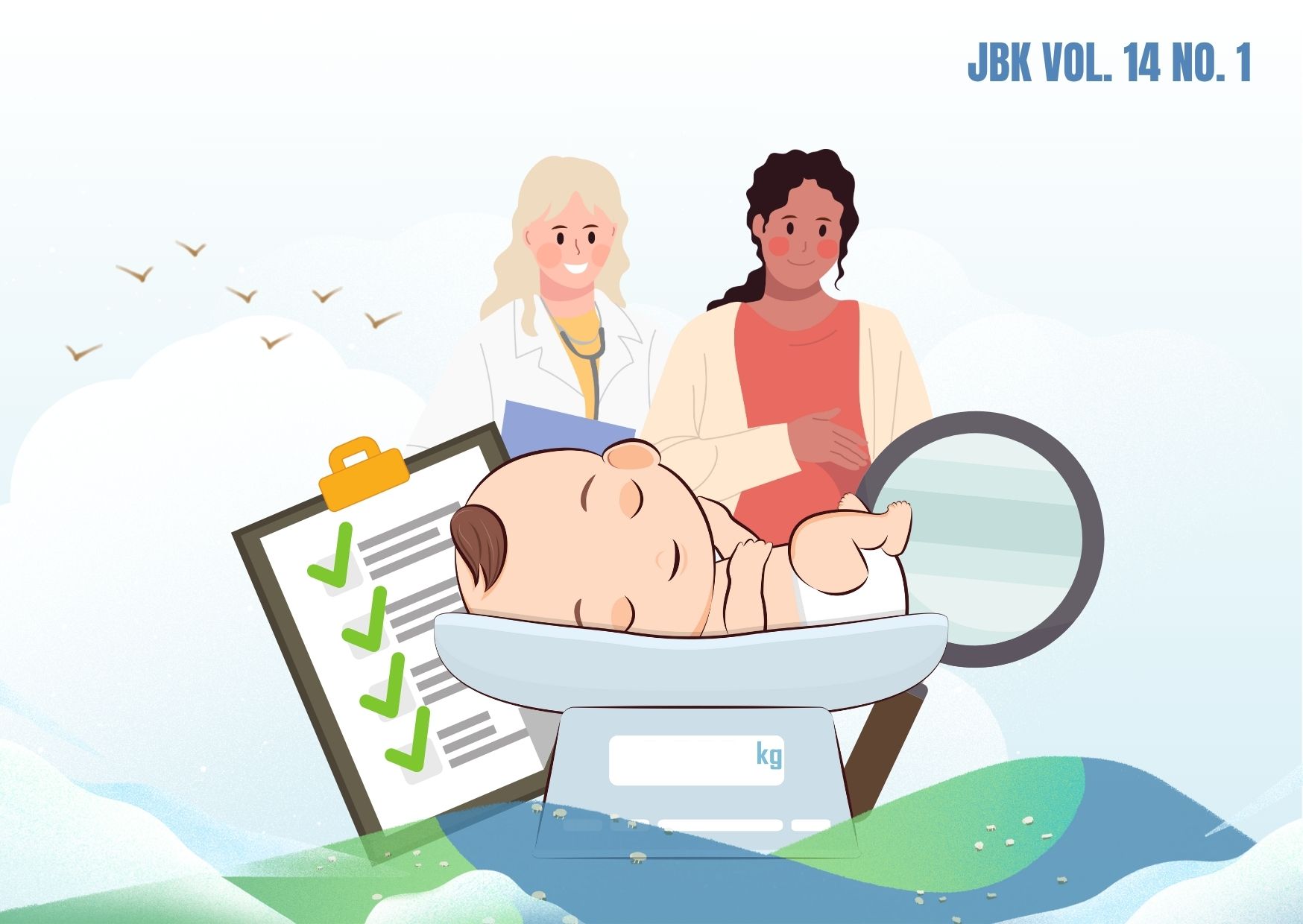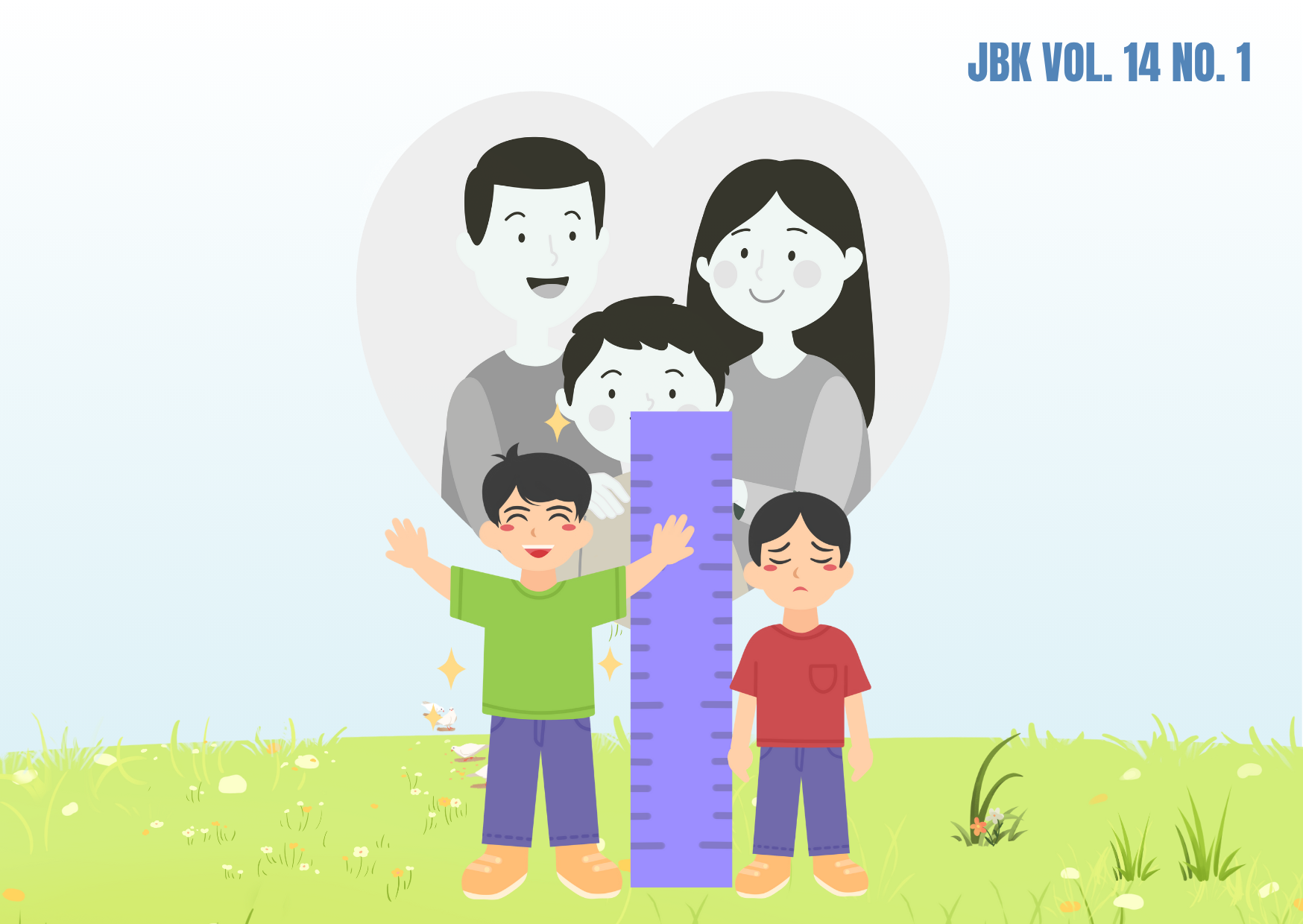SURVIVAL ANALYSIS TO DETERMINE AGE TO GIVE FIRST BIRTH IN WOMEN IN EAST JAVA USING EXTENDED COX REGRESSION
Downloads
The age of a woman when giving birth to her first child needs to be a concern because it is related to the safety of the mother and baby. A woman being too young or too old increases the risk of death for both the mother and baby. Every woman giving birth for the first time is likely to experience psychological disorders such as anxiety and excessive fear during labor, and even postpartum depression. Given the importance and possible extent of the consequences of women giving birth for the first time, this study intended to assess the factors that influence the age at first birth, especially amongst women of childbearing age in East Java. These factors include the age at first marriage, education, and region. The method used was the extended Cox regression model. The analysis shows that the age at first marriage and education are factors that significantly influence the age at first birth. The more mature the age at first marriage, the more mature the age at first birth. Likewise, the higher the educational status, the higher the potential for giving birth to a first child over the age of 23, especially amongst women who graduated high school and university.
Andari, F. N., and Ayuningrum, R. (2019). Pengalaman Persalinan Pertama Dengan Riwayat Menikah Dini di Kelurahan Pagar Dewa Kota Bengkulu. Jurnal Keperawatan Sriwijaya, 6(2), 26-33.
Barnes, L. A. J., Barclay, L., McCaffery, K., and Aslani, P. (2019). Factors Influencing Women's Decision-Making Regarding Complementary Medicine Product Use In Pregnancy and Lactation. BMC Pregnancy and Childbirth, 19(280), 1-14.
Chernet, A. G., Shebeshi, D. S., and Banbeta, A. (2019). Determinant of Time-To-First Birth Interval after Marriage among Ethiopian Women. BMC Woman's Health, 19(157), 1-6.
Corneles, S. M., and Losu, F. N. (2015). Hubungan Tingkat Pendidikan dengan Pengetahuan Ibu Hamil Tentang Kehamilan Risiko Tinggi. Jurnal Ilmiah Bidan, 3(2), 51-55.
Dwinanda, A. R., Wijayanti, A. C., and Werdani, K. E. (2015). Hubungan Antara Pendidikan Ibu dan Pengetahuan Responden dengan Pernikahan Usia Dini. Jurnal Kesehatan Masyarakat Andalas, 10(1), 76-81.
Fagbamigbe, A. F., and Idemudia, E. S. (2016). Survival Analysis and Prognostic Factors of Timing of First Childbirth among Women in Nigeria. BMC Pregnancy and Childbirth, 16, 16(102), 1-12.
Febryanti, L. (2015). Kontribusi Faktor Pendidikan Terhadap Usia Perkawinan Pertama Wanita di Kecamatan Trangkil Kabupaten Pati. Jurnal Geografi, 12(1), 39-51.
Hosmer, D. W., Lameshow, S., and May, S. (2008). Applied Survival Analysis: Regression Modelling of Time Event Data. John Willey.
ICF. (2018). Demographic and Health Surveys Standard Recode Manual for DHS7. ICF.
Kariman, N., Amerian, M., Jannati, P., Salmani, F., and Hamzekhani, M. (2016). A Path Analysis of Factors Influencing the First Childbearing Decision-Making In Women In Shahroud In 2014. Glob J Health Sci., 8(10), 24-33.
Kleinbaum, D. G., and Klein, M. (2012). Statistics for Biology and Health Survival Analysis: Learning Text Third Edition. Springer.
National Population and Family Planning Commission. (2011). Kamus Istilah Kependudukan dan Keluarga Berencana.
National Population and Family Planning Commission. (2015). Rencana Strategis Perwakilan Badan Kependudukan Dan Keluarga Berencana Nasional Provinsi Jawa Timur Tahun 2015-2019.
Sahara, N., and Putri, D. Z. (2018). Faktor-Faktor yang Mempengaruhi Keputusan Wanita Menikah di Sumatera Barat. EcoGen, 1(3), 640-647.
Sari, D. P., Setianingsih, and Rahayu, W. (2017). Pengaruh Kehamilan Remaja Terhadap Bayi Berat Badan Lahir Rendah. Jurnal SMART Keperawatan Sekolah Tinggi Ilmu Kesehatan (STIKes) Karya Husada, 4(2), 56.
Seyedtabib, M., Moghimbeigi, A., Mahmoudi, M., Majdzadeh, R., and Mahjub, H. (2019). Pattern and Determinant Factors of Birth Intervals among Iranian Women: A Semi-Parametric Multilevel Survival Model. Journal of Biosocial Science, 52(4), 1.
Widyawati, E., and Pierewan, A. C. (2017). Determinan Pernikahan Usia Dini di Indonesia. Jurnal Ilmu-Ilmu Sosial, 14(4), 68.
Copyright©2022 Jurnal Biometrika dan Kependudukan (Journal of Biometrics and Population)
This work is licensed under a Creative Commons Attribution-NonCommercial-ShareAlike 4.0 International License.
1. Copyright of all journal manuscripts is held by the Jurnal Biometrika dan Kependudukan.
2. Formal legal provisions to access digital articles of the electronic journals are subject to the provision of the Creative Commons Attribution-ShareAlike license (CC BY-NC-SA), which means that Jurnal Kesehatan Biometrika dan Kependudukan to keep, transfer media/format, manage in the form of databases, maintain, and publish articles.
3. Published manuscripts both printed and electronic are open access for educational, research, and library purposes. Additionally, the editorial board is not responsible for any violations of copyright law.



































